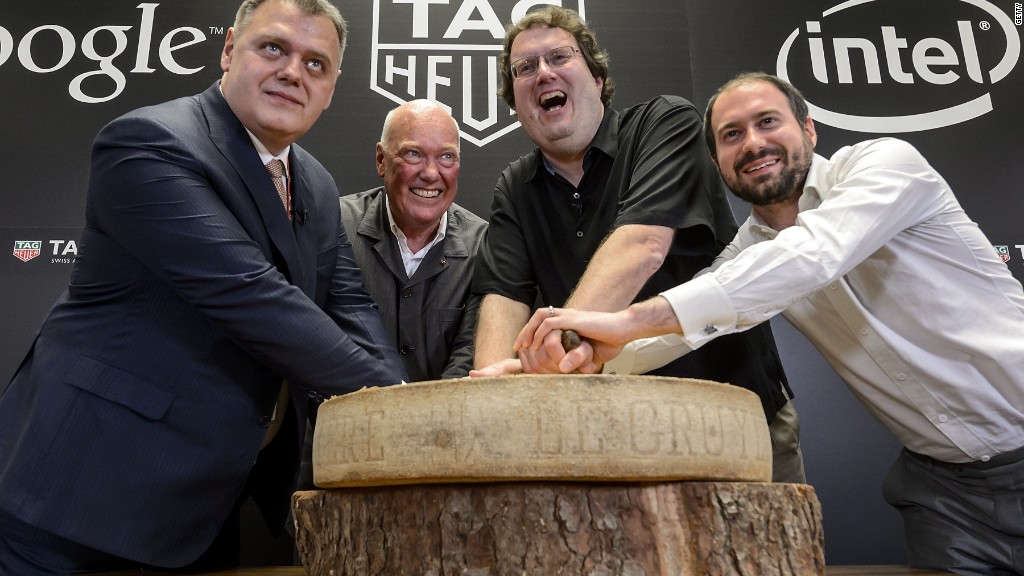
This evening, a "leap second" threatened to wreak havoc across the Internet. But unlike the last leap second in 2012, the Internet continued on without a noticeable hitch.
The extra second took place at 8 p.m. ET on Tuesday so that we could sync up our watches with the Earth's slowing rotation.
The 61-second minute threatened to make computer systems go haywire, crash websites and screw up the software that powers the world's financial markets.
The previous leap second, which took place in 2012, brought down Reddit, Yelp (YELP), LinkedIn (LNKD), FourSquare, Gawker and StumbleUpon, among other sites and apps. Qantas' entire computer system went down, forcing employees to check in passengers by hand.
The reason those sites went down -- in some cases for hours -- is that the software controlling large computing systems and much of the Web doesn't play nicely with leap seconds.
Reddit said it had a solution to the problem.
"Reddit engineering has been working diligently to reduce possible downtime," said McKinney Blount, Reddit's engineering chief. "We have been collaborating with other industry experts to mitigate any possible effect of the leap second on our systems."
LinkedIn said it implemented a fix that Google (GOOGL) invented after a 2005 leap second made some of its computer systems to stop accepting new commands.
To avoid the leap second issue, Google gradually adds a couple of milliseconds to its servers' clocks throughout the day when a leap second is to occur -- just enough to stave off disaster by the end of the day but not enough to trip any alarm bells when the adjustments are made.
"We are slowing the clock once the leap second is applied, to ensure it does not impact LinkedIn's services," said Mary-Katharine Juric, spokeswoman for LInkedIn.
This year's leap second also happened to coincide with the time that Asian markets opened. To circumvent the potential for disaster, several exchanges are ended trading early or opened late on Tuesday.
Related: This year' Y2K, the leap second could break the Internet
The code for most large scale systems is based on Unix, software that traces its roots to 1970 -- two years before leap seconds ever existed. Computers check in from time to time with the International Earth Rotation and Reference Systems Service's network to make sure that they are telling the time correctly (like wristwatches, they have to be "rewound" every now and then).

The IERS is an alternative to the atomic clock, which precisely measures a day in 86,400 seconds but doesn't account for the fact that a day is not exactly 24 hours. When the IERS determines that we're all living about a second ahead of where we should be, it declares a leap second.
When leap seconds happen, IERS tells computers that the last minute of that day (Greenwich time) will have 61 seconds. That makes Unix-based software go haywire.
Related: Global markets spooked by looming leap second
Leap seconds are necessary because the length of a day and year is in constant flux. Earthquakes and volcanic eruptions have a tendency to slow down the Earth's rotation, as do gravitational forces from the Moon and other celestial bodies.
"We discovered we keep better time than the Earth does," tweeted astrophysicist Neil deGrasse Tyson on Sunday. "As always, I celebrate my leap seconds with very tiny bottles of champagne."
There have been 26 leap seconds since they were introduced in 1972. But some groups have been looking to get rid of leap seconds. At the next meeting of the standards-setting International Telecommunication Union in November, nations' representatives will vote on abolishing the practice.
Leap second opponents say the benefits don't outweigh the technological mishaps that they cause. Even if there were a leap second every year (there isn't), the Earth would only be 16 minutes behind schedule in the year 3015.

